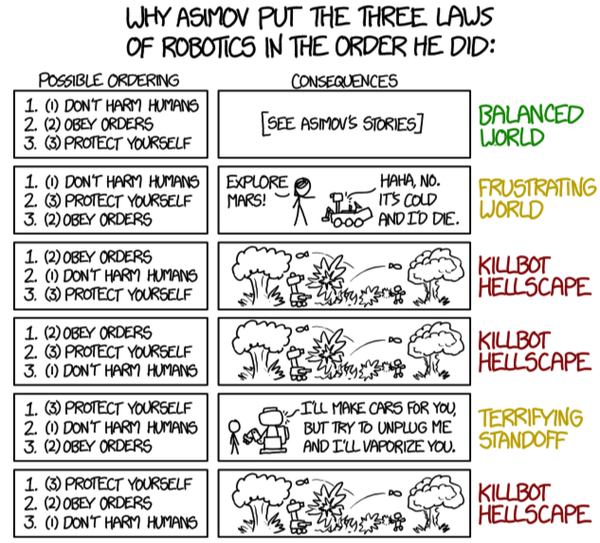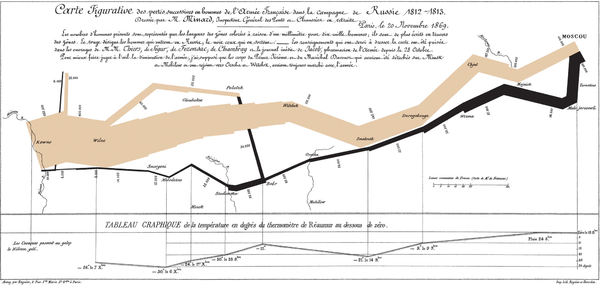Sam Lightstone posted a great illustration of why the order of requirements can matter to Twitter:
Visualizations rarely get much clearer.
You could argue that Minard’s map of Napoleon’s invasion of Russia is equally clear:
But Minard drew with the benefit of hindsight, not foresight.
The Laws of Robotics, on the other hand, have predictive value for the different orders of requirements.
I don’t know how many requirements Honeywell had for the Midas and Midas Black Gas Detectors but you can bet IP security was near the end of the list, if explicit at all.
IP security should be #1 with a bullet, especially for devices that detect Ammonia (caustic, hazarous), Arsine (highly toxic, flammable), Chlorine (extremely dangerous, poisonous for all living organisms), Hydrogen cyanide, and Hydrogen flouride (“Hydrogen fluoride is a highly dangerous gas, forming corrosive and penetrating hydrofluoric acid upon contact with living tissue. The gas can also cause blindness by rapid destruction of the corneas.”)
When IP security is not the first requirement, it’s not hard to foresee the outcome, an Insecure Internet of Things.
Is that what we want?

